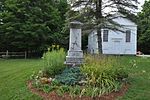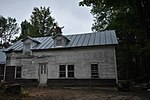Moosalamoo National Recreation Area
2007 establishments in VermontNational Recreation Areas of the United StatesNortheastern United States protected area stubsProtected areas established in 2007Protected areas of Addison County, Vermont ... and 2 more
United States government stubsVermont geography stubs
Moosalamoo National Recreation Area is one of two national recreation areas in the Green Mountain National Forest in the U.S. state of Vermont. The recreation area is located between Middlebury and Brandon in the northern half of the Green Mountain National Forest. The area consists of 15,875 acres (6,424 ha) surrounding Mount Moosalamoo.The Moosalamoo National Recreation Area was created by the New England Wilderness Act of 2006. The area is administered by the U.S. Forest Service.
Excerpt from the Wikipedia article Moosalamoo National Recreation Area (License: CC BY-SA 3.0, Authors).Moosalamoo National Recreation Area
Goshen-Ripton Road,
Geographical coordinates (GPS) Address Nearby Places Show on map
Geographical coordinates (GPS)
| Latitude | Longitude |
|---|---|
| N 43.91667 ° | E -73.01667 ° |
Address
Goshen-Ripton Road 3213
05733
Vermont, United States
Open on Google Maps







